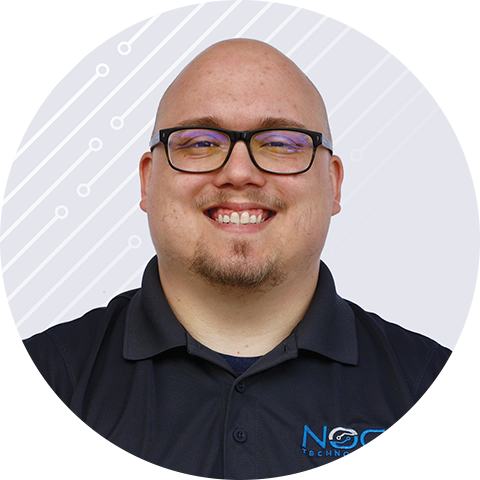Meet the Team: Ted Coppedge
by | NOC Technology

Meet the humans behind the IT.
Ted is our Director of IT. When asked what he brings to the team, Ted said: "Expertise. Sometimes our techs will come to me with questions that I am typically able to answer (or find an answer). I have a particularly strong knowledge and skillset with networking and virtualization."
Q. Early bird or night owl?
Night owl
Q. Favorite movie?
V for Vendetta.
Q. Favorite bands?
My current favorite is Bear Tooth.
Q. Favorite local restaurant?
7th Street Tap and Grill. I recommend their pork tenderloin.
Q. If you could invite anyone to dinner, who would it be?
My parents.
Q. Hobbies?
I have been playing Magic the Gathering for 20+ years and have more recently started to play Dungeons and Dragons.
Q. As the director of IT at an IT service provider, does your position carry any unique challenges?
Since we are such a tightly knit group, I might do more day-to-day provision than most. Beyond that, my job is pretty similar to that of other IT directors.
Q. Favorite IT tech tip or hack?
My favorite shortcut is to use “Windows + V” to view and manage my clipboard.
Q. Favorite productivity software or extensions?
U Block Origin. It’s a convenience and cybersecurity browser extension that blocks ads and malicious websites. It will also redirect you if it suspects you are navigating towards anything suspicious and can even block phishing attempts.
Q. What current cybersecurity threats concern you the most for NOC’s clients?
Phishing attempts. We have a good security stack (software and hardware) in place to prevent most hacking or malware attacks, but an end user can be taken advantage of through phishing pretty easily.
Some of our clients are spear phished if they have been compromised in the past or have somehow given an inkling to an attacker that they could be a worthwhile or easy target. However, most of our clients are being blanketed by run-of-the mill phishing attempts.
Q. How do you feel about recent AI language models?
In general, I like AI when it is not overly-used or relied upon. I treat it primarily as a helpful tool. I personally use it mainly for scripting or partial-scripting of code.
Q. If you could give NOC Clients one piece of advice to improve their relationship with the technology that they use, what would it be?
Budget better for equipment upgrades. Many of our clients could have prevented a painful IT crisis by upgrading their hardware or software ahead of time. Most of the time they have been trying to save some money by avoiding pushing off an upgrade, but end up with a much larger and more expensive problem as a result.




